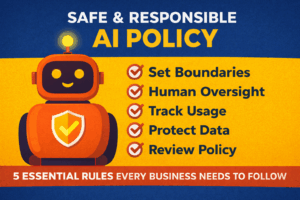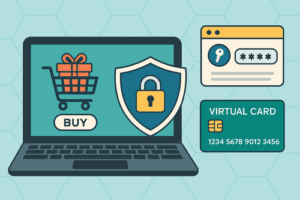Cybersecurity for Nonprofits: Easy Tips to Keep Your Important Information Safe
Today, keeping your nonprofit safe online is a must. These groups face issues that can disrupt their goals. Moreover, protecting private data, like donor info, is crucial since cybercriminals may try to steal it. Therefore, good cybersecurity practices keep this data safe. This guide offers nonprofit leaders, IT teams, and others simple tips to boost security. By raising awareness, we aim to help protect sensitive data so your organization can work safely and confidently.
Understanding Cybersecurity Threats
Main Cybersecurity Threats for Nonprofits
Nonprofits are at higher risk of cyber threats. They have limited budgets and handle sensitive data. To begin with, phishing scams are common. Here, attackers trick workers with fake emails to get info. Additionally, ransomware is another threat as it locks data and demands money for access. Furthermore, data breaches can leak donor records, thus harming the group’s reputation and finances. Insider threats are a concern too, where staff or volunteers may cause security issues by mistake or on purpose.
Thus, knowing about these threats is key to creating strong cybersecurity plans. By finding and fixing weak spots, nonprofits can better guard against cyber threats.
Challenges in Data Protection for Nonprofits

Nonprofits face special issues in achieving strong cybersecurity. First, limited money for modern systems often leads to outdated and weak security. Many nonprofits also lack dedicated IT staff, relying instead on volunteers or part-timers who may not know much about cybersecurity.
Secondly, providing all employees with good cybersecurity training is another challenge. Without enough training, employees might put the organization at risk. As nonprofits often handle sensitive info, they become targets for cybercriminals.
To overcome these challenges, the focus should be on low-cost solutions and continuous cybersecurity education for all.
Putting Good Cybersecurity Practices in Place
Protecting Important Information
To protect nonprofit data, use a strong approach. Start by reviewing the organization’s data to find important info and where it’s stored. Consequently, this helps set strict access controls, allowing only approved people to see it.
Furthermore, use encryption to secure data during transfer and storage, ensuring it remains safe even if intercepted. Additionally, regularly update systems with security patches to fix weaknesses. Create a solid backup and recovery plan for data restoration after losses or incidents.
Moreover, train staff and volunteers on handling sensitive info. Teach them to spot phishing attempts and use strong passwords for better readiness against cybersecurity threats.
Cybersecurity Strategies for Nonprofits
Developing strong cybersecurity strategies involves key steps. First, start by creating a policy that outlines rules and duties, so everyone knows their role. Regular training sessions reinforce these rules and raise risk awareness.
Additionally, adding multi-factor authentication (MFA) provides extra security. Nonprofits should also use firewalls to manage network traffic and follow security guidelines.
Hire experts to regularly check for system weaknesses to find and fix IT issues. Furthermore, use cloud services with built-in security features for flexible and affordable data protection.
Building a cybersecurity-aware culture empowers employees to protect nonprofit data actively.
Complete Cybersecurity Solutions
Building a Security-Minded Culture

Creating a security-focused culture is key for effective cybersecurity. This involves everyone, from leaders to volunteers, in understanding data protection. Therefore, include cybersecurity training in the onboarding process and offer regular courses to keep everyone updated on threats and best practices.
Encourage open conversations about cyber incidents to create a safe space for reporting risks. It’s crucial to recognize and reward actions that improve security.
Moreover, leaders should support and prioritize cybersecurity, showing their commitment to protecting sensitive info. By promoting an alert and responsible culture, nonprofits can better protect against cybersecurity threats, ensuring everyone is part of the defense.
Using Technology for Protection
Using technology is crucial for strong cybersecurity. Install advanced antivirus software and intrusion detection systems to spot and stop threats. Plus, cloud-based solutions provide extra security with automatic updates and backups.
Use encryption tools to secure data while sending and storing, ensuring it remains unreadable if intercepted. Moreover, network segmentation limits breaches, keeping key systems separate from less secure areas.
Finally, consider using a centralized security management platform for better monitoring and response. This technology offers real-time alerts and insights, helping your team quickly address security issues. By embracing these technologies, nonprofits can better defend against cyber threats and ensure solid data protection.



